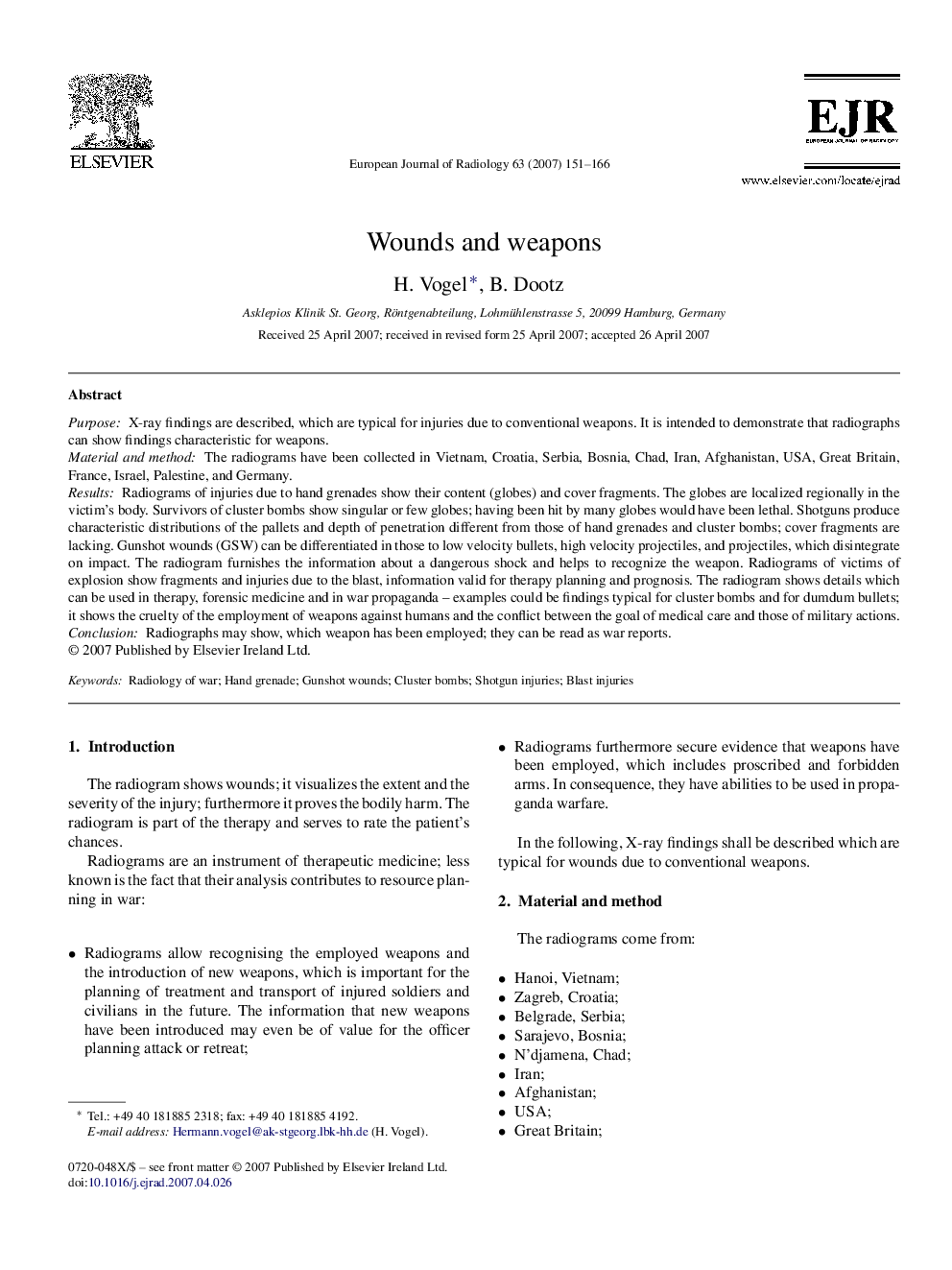| Article ID | Journal | Published Year | Pages | File Type |
|---|---|---|---|---|
| 4228098 | European Journal of Radiology | 2007 | 16 Pages |
PurposeX-ray findings are described, which are typical for injuries due to conventional weapons. It is intended to demonstrate that radiographs can show findings characteristic for weapons.Material and methodThe radiograms have been collected in Vietnam, Croatia, Serbia, Bosnia, Chad, Iran, Afghanistan, USA, Great Britain, France, Israel, Palestine, and Germany.ResultsRadiograms of injuries due to hand grenades show their content (globes) and cover fragments. The globes are localized regionally in the victim's body. Survivors of cluster bombs show singular or few globes; having been hit by many globes would have been lethal. Shotguns produce characteristic distributions of the pallets and depth of penetration different from those of hand grenades and cluster bombs; cover fragments are lacking. Gunshot wounds (GSW) can be differentiated in those to low velocity bullets, high velocity projectiles, and projectiles, which disintegrate on impact. The radiogram furnishes the information about a dangerous shock and helps to recognize the weapon. Radiograms of victims of explosion show fragments and injuries due to the blast, information valid for therapy planning and prognosis. The radiogram shows details which can be used in therapy, forensic medicine and in war propaganda – examples could be findings typical for cluster bombs and for dumdum bullets; it shows the cruelty of the employment of weapons against humans and the conflict between the goal of medical care and those of military actions.ConclusionRadiographs may show, which weapon has been employed; they can be read as war reports.
